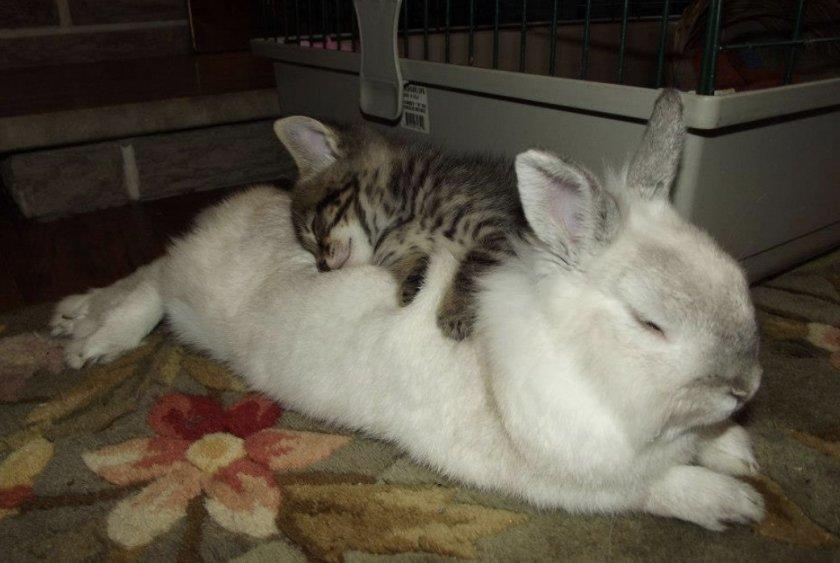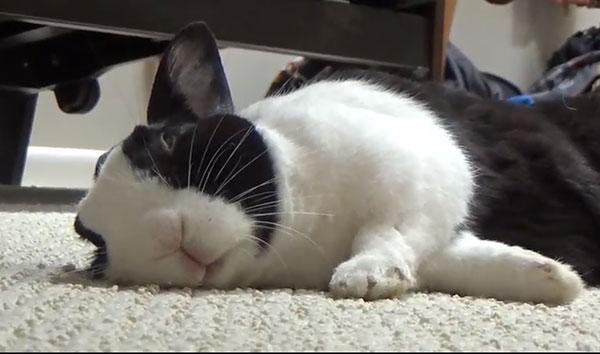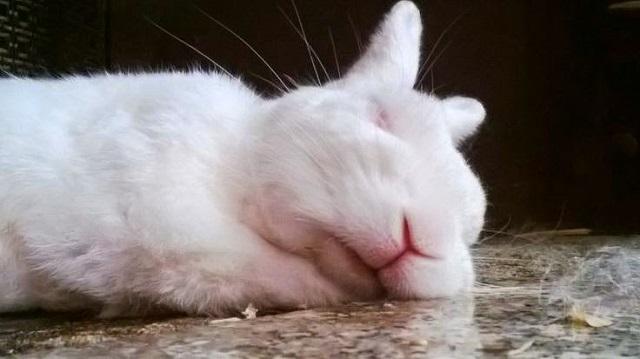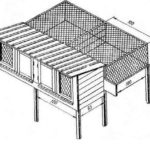Healthy, sound sleep is the key to health and good mood not only for people, but also for animals. Sometimes rabbit breeders think that their pets don't sleep at all. But this opinion is wrong. The animals are very active, so they can rarely be seen during sleep. In fact, rabbits sleep like all animals, only in light sleep. Let's find out how and how much decorative rabbits sleep.
Features of rabbit sleep
To learn more about the relationship between sleep and the visual organs of a furry animal, you need to understand the physiology and characteristics of the body.
How do you fall asleep?
Rabbits see well in the dark. The waking hours occur in the early morning and twilight. A herbivore in the wild is an object of hunting for predators. So he has to be on guard all his life.
One of the main evolutionary features of the animals is the location of the eyes on the head, widely spaced from each other. This allows you to clearly see what is happening around you and run away from it at the slightest danger. It is noteworthy that pets clearly see the space from the sides, but do not notice objects directly in front of them.
In addition to acute night vision, numerous receptors located throughout the animal’s body help in case of danger. Nocturnal animals are well oriented in space thanks to the antennae located on the muzzle.
One of the main means of protection is the ability to sleep with your eyes open. Thanks to this, they react quickly when danger appears on the horizon. A rabbit resting with its eyes closed occurs if it is in a calm environment and is not in danger.
Frequency and duration of sleep
The duration of a herbivore's sleep depends on its age and state of health. An adult needs 8-9 hours a day to rest. But in the natural habitat this is extremely difficult. With a lack of sleep, the animal feels unwell, which leads to deterioration in health.
At home, decorative rabbits sleep just as lightly as in the wild. Therefore, owners of furry animals rarely observe them in a relaxed state. Herbivores doze for 3-5 minutes; the slightest rustle can wake them up and quickly orient themselves in space. If the rabbit senses danger, it will immediately run away, hiding in a safe place.In the forest, a long-eared animal, even in its burrow, is not completely protected from danger.
More often you will notice that rabbits sleep in a sitting position. This helps you react instantly and run away if necessary. Short-term naps during the day help accumulate the amount of sleep that the rodent needs.
When do they go to bed
The shy animal has an unusual sleep pattern. Since in nature he is the object of hunting by most predators, he has to choose a specific time for rest. Therefore, he goes out in search of food and activity in the early morning and in the evening. During the rest of the hours the animal can rest. At night, the rabbit hides in its hole to protect itself from danger.
Is it possible for a rabbit to sleep in the same bed as a human?
A physiological feature of long-eared pets is uncontrolled defecation. A rabbit cannot be potty trained or diaper trained like a dog or cat. Therefore, he has bowel movements at any time, anywhere. Moreover, rodents of this species have another feature - they eat nocturnal caecotrophs (a type of feces). Not every breeder will like this action in the bed next to him.
The rabbit belongs to the category of nocturnal animals. But at home, the pet often leads the same lifestyle as the owner, that is, sleeps at night.
The disadvantages of eared pets include the fact that they are not able to jump from great heights. Therefore, it will be difficult for them to get out of bed. Fold-eared breeds have long ears that also block part of the view, which impairs visibility around them. Disorientation in space will lead to bowel movement in bed.
If the breeder is not embarrassed by all these nuances and peculiarities of the animal’s behavior, he may well put his pet next to him in the bed. But it should be remembered that decorative rabbits are small in size. If you move carelessly, you can simply run over your pet.
What to do if your rabbit has trouble sleeping?
When a twilight animal finds itself in a new environment, it experiences stress and is in constant tension. For this reason, the rabbit has problems sleeping. Anxiety can manifest itself not only in young but also in adults. In order for a herbivore to normalize its sleep pattern and sleep enough hours a day, it is necessary to create a quiet and calm atmosphere for it.
Before getting a furry pet, you need to prepare its habitat in advance:
- After purchasing a cage for an animal, you need to take care of its location. It should be a quiet room without extraneous noise. It is advisable that the radio and television be located away from the rabbit's house. The corridor and other passage areas are not suitable for a pet. Here the rabbit will not feel safe and will not be able to fully rest.
- In the wild, the long-eared animal hides in a hole. He feels safe there. Therefore, you will have to build a small dwelling in the cage where the pet can rest peacefully. It can be made from boards or plastic pipes. This way the rabbit can hide if necessary and feel protected.
- If there are small children in the house, you should explain to them that it is better not to play near a long-eared animal. It is advisable to allocate a place away from the cage for games.
- At night, it is undesirable to make loud noises: turn on music, TV.This very frightens the animal, forcing it to be in constant tension.
- It is not recommended to disrupt the herbivore's regime or disturb it when it is resting or at night. This way the animal will not be able to relax and feel safe.
The animal’s psychological state, healthy sleep and wakefulness depend on the conditions of detention and the degree of care of the owner. Before bringing an eared animal into your home, you need to first prepare a habitat for it and take care of favorable conditions for your pet. If the recommendations are followed, a domesticated rabbit will be able to live peacefully and please its owner.















